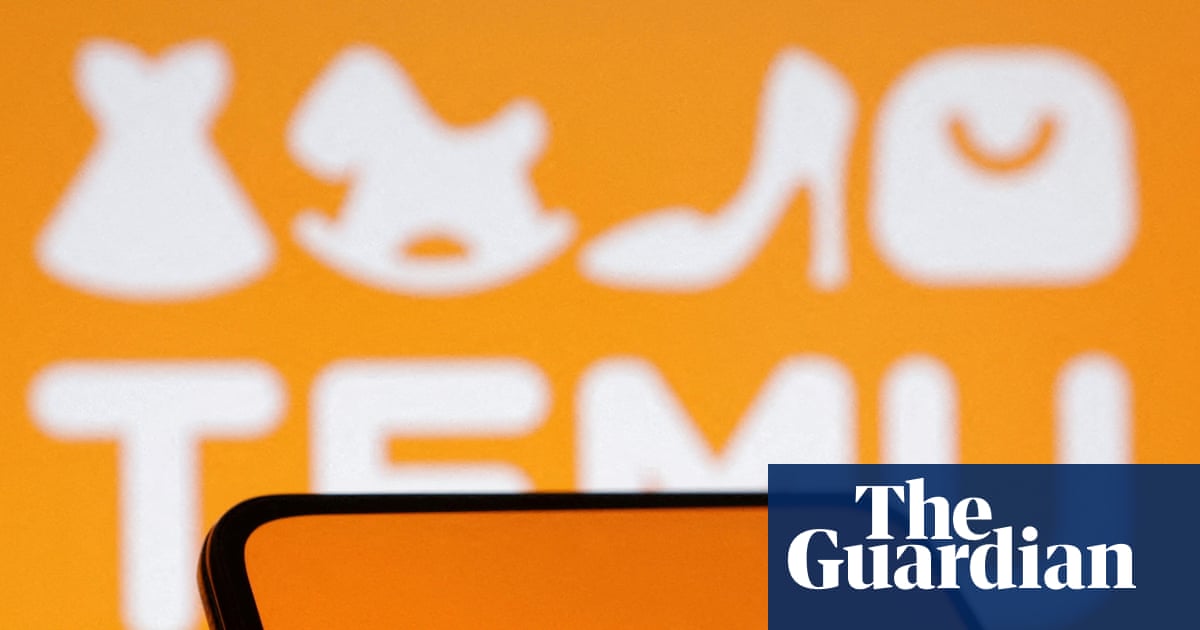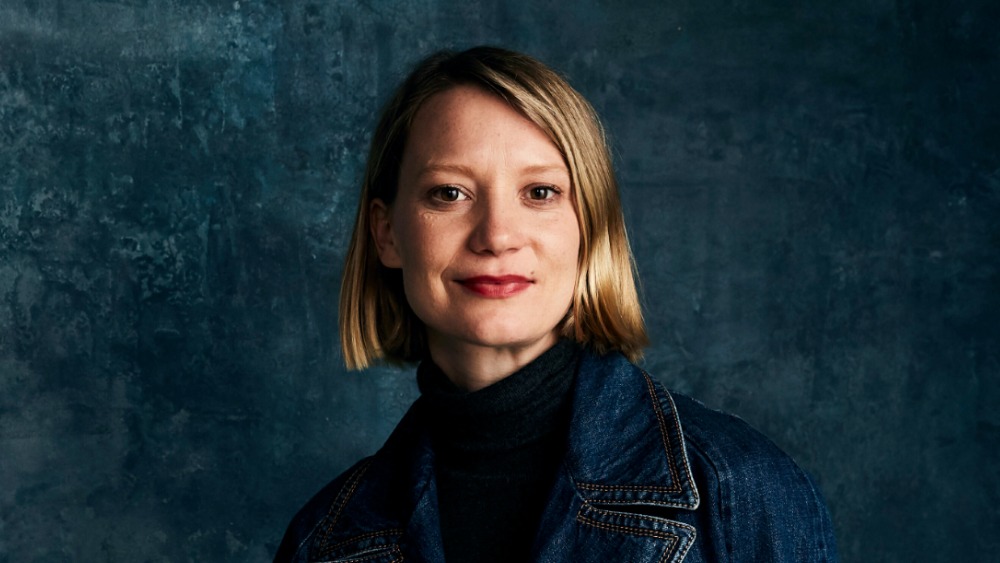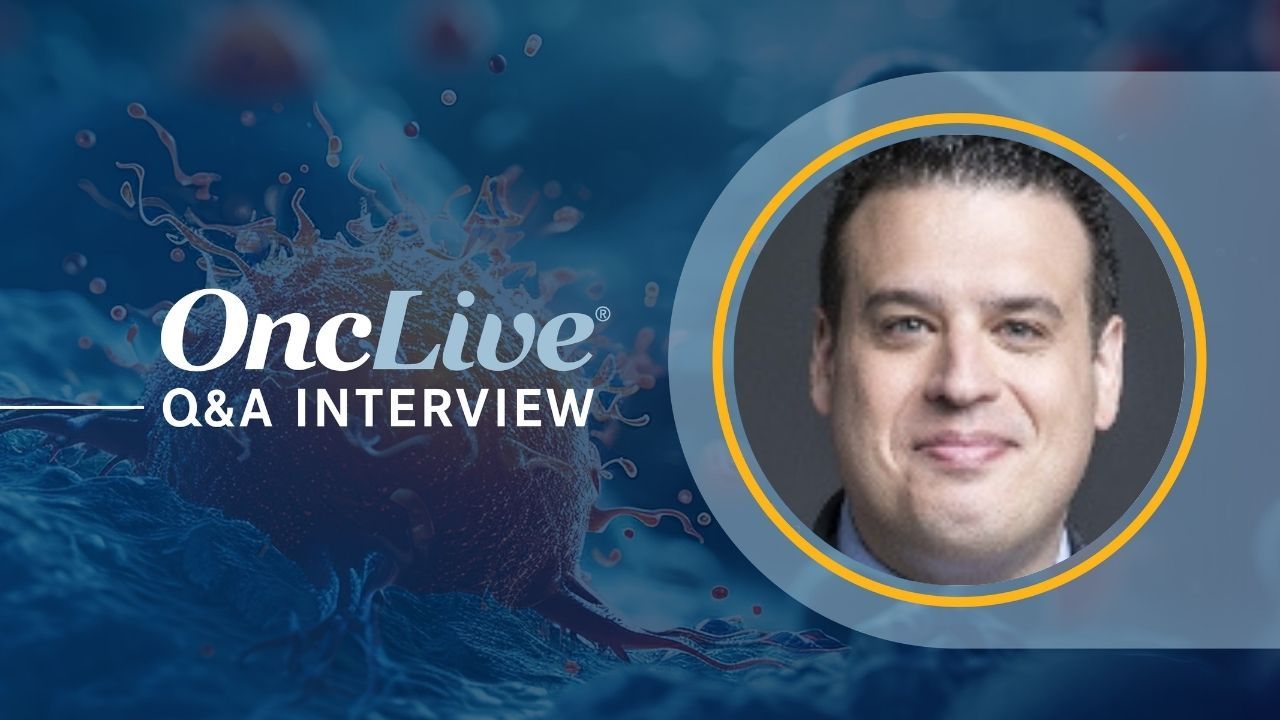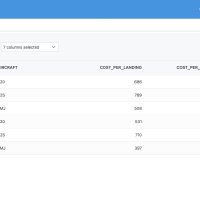Growth charts for children with rare genetic disorders – giving healthcare professionals and families clearer guidance on how a child is developing – have been created by an international team, led by the University of Bristol.
The…

Growth charts for children with rare genetic disorders – giving healthcare professionals and families clearer guidance on how a child is developing – have been created by an international team, led by the University of Bristol.
The…

The Chinese online marketplace Temu’s EU operations more than doubled pre-tax profits last year to just below $120m (£90m) despite employing just eight people, accounts show.
They rose 171% in the 12 months to December 2024 compared with the $44.1m the year before, as shoppers snapped up its low-cost goods, which are widely promoted on social media.
However, the company paid just $18m in corporation tax, almost $3m of which was a mandatory top-up tax brought in at the end of 2023 after the EU signed up to a global minimum tax rate for large companies.
The accounts filed for the group’s Ireland-based EU parent group, Whaleco Technology, also show revenues rose to $1.7bn, compared with $758m the previous year, before new controls on the super-budget retailer.
Separate documents show Temu now has more than 115 million customers across the EU – equivalent to more than a quarter of the population.
The figures emerged after separate accounts showed almost doubling profits and revenues at the online marketplace’s UK operations.
The rise in sales comes before moves by the EU to close a loophole that allows packages worth less than €150 (£130) to avoid customs duty and some border checks.
Last year, 4.6bn low-value parcels entered the EU, equivalent to 12m a day, three times more than in 2022. More than 91% of parcels valued at less than €150 came from China, where Temu and its fellow low-cost seller Shein make and dispatch most of their goods.
However, controls began to be tightened in July this year, and customs duty is expected to be applied from 2028.
The US this summer abolished its “de minimis” exemption, which allowed goods worth less than $800 to skip import duty, to limit the rise of Temu and Shein, while the UK chancellor has said she is reviewing a similar loophole.
Paul Monaghan, the chief executive of the Fair Tax Foundation, estimates that Temu’s Irish entity facilitated consumer sales of $10bn in the EU – as its revenue figure only accounts for the company’s commission and fees from independent sellers on its marketplace.
If Temu’s estimated $2bn in sales via its sellers are included in the UK, that would make the marketplace bigger than the UK retailer Next and about the same size as Primark.
“Serious questions need to be asked as to why Temu has such a negligible economic and tax footprint in the UK and across Europe despite its enormous sales,” Monaghan said.
“What we have here is a chain of companies in a series of tax havens, that have been structured so as to leave little or no tax benefit in Europe.
after newsletter promotion
“The UK and other European governments need to move much more quickly to not only protect their tax base, but allow existing retailers to compete on a level playing field with these Chinese e-commerce giants that have overseas tax avoidance hard-wired into their structures.
“Standing strong on the global minimum tax and digital services tax, reviewing customs duty exemptions and bolstering requirements for multinationals to publish a country-by-country breakdown of the taxes they pay would be a great place for politicians to start.”
A spokesperson for Temu said its operations in Ireland were “real operating companies employing real people” and the employee numbers did not reflect the full scale of its operation presence.
“Temu categorically rejects any suggestion that our structure or operations are designed to avoid taxes or minimise our economic footprint in Europe. Despite being a young and fast-growing company still in the investment phase, we have already paid billions of euros in taxes across European jurisdictions, and that figure will continue to rise as our operations mature.
“The tax figure cited refers only to the tax paid by a single legal entity and does not include customs duties, VAT, and other taxes.
“Temu entered the European market just two years ago and has invested heavily in building its platform to connect sellers and consumers more efficiently, passing those efficiencies back to consumers in the form of lower prices on quality goods. At the same time, we have been creating new growth opportunities for local sellers across Europe.
“Our focus is on the long term: building a sustainable, compliant, and trusted platform that helps consumers access quality products at affordable prices while enabling local sellers across Europe to grow their businesses and reach new markets.”

Mia Wasikowska is stepping behind the camera to co-helm “The Great White,” an offbeat legal dramedy for ABC Australia. The actor-turned-filmmaker will share directing duties with Nash Edgerton on the six-part redemption tale, led by Hugo…

“The most important thing was for the first single to sound ambitious sonically. It had to be big and fun,” he previously said of the song
When life gives you lemons … sometimes you end up at a lemonade stand watching…
This request seems a bit unusual, so we need to confirm that you’re human. Please press and hold the button until it turns completely green. Thank you for your cooperation!

Efforts to leverage the immunomodulatory effects and synergistic combinability of CELMoDs like iberdomide (CC-220) and mezigdomide (CC-92480) to augment standard T-cell redirection therapies could lead to more durable remissions or even cures for patients with relapsed/refractory multiple myeloma, according to Joshua Richter, MD.1
Preclinical data suggest that these CELMoDs, which operate through targeted degradation of the cereblon protein, could provide benefit to patients who are resistant to older drugs like lenalidomide (Revlimid) and pomalidomide (Pomalyst), providing a well-tolerated treatment that could be administered for longer durations and in combination with immune therapies or proteasome inhibitors.
“We are using these drugs to prime the collection [of T cells], and that may lead to higher curability using the CAR T-cell modality,” Richer shared in an interview with OncLive® at the
In the interview, Richter discussed how next-generation immunomodulatory drugs could enhance current T-cell therapies in myeloma, current avenues of investigation for CELMoDs in multiple myeloma, and the desired balance between outcomes and toxicity for future immune-based treatments in myeloma.
Richter is an associate professor of medicine in the Division of Hematology and Medical Oncology at The Tisch Cancer Institute, and director of Multiple Myeloma at Blavatnik Family Chelsea Medical Center, Mount Sinai, in New York.
Richter: [There have been] 3 great epochs of treatment in myeloma. In the old days, we started with classical chemotherapy. Then we moved on to the second generation [of treatment], with novel agents like immunomodulatory drugs, proteasome inhibitors, and monoclonal antibodies. Now we are in that third phase of T-cell redirection with CAR T-cell therapies and bispecific antibodies, and we are heading towards trispecific antibodies.
These therapies are amazing, and they provide some of the most incredible and durable responses we have ever seen, but we have not exactly perfected them. What can we do to help the T cells work even better to fight myeloma? It turns out that there are many drugs that we use already in myeloma for their anti–plasma cell [activity]; one of the ways they do that is by augmenting T-cell responses. [This approach] is the perfect [addition to] T-cell redirection therapy.
We are taking these next-generation immunomodulatory drugs that we call CELMoDs and adding them into the fray. This is not because they are directly killing plasma cells, but because they are augmenting an already robust T-cell response from bispecific antibodies and CAR T-cell therapy. [We want to see whether] there is a depth of response that we can achieve with these combinations that could lead to either unbelievably durable remissions or a cure.
There are a couple ongoing trials that are evaluating using CELMoDs in a variety of settings. The obvious areas [of investigation involve] using CELMoDs either after CAR T-cell therapy as a maintenance approach to maintain and prolong that activated T-cell response against the myeloma, or combining CELMoDs with bispecific antibodies and with drugs like elranatamab-bccm [Elrexfio] and teclistamab [Tecvayli] to see if you can improve overall response rates and progression-free survival.
[There’s another] cool study [of novel CELMoDs], data [from which have] been presented by my colleague Adolfo Aleman, PhD, [of Icahn School of Medicine at Mount Sinai].2 Usually, when we are getting ready to collect T cells for apheresis, we hold all treatment for at least a month and have [the patient receive no therapy] so we do not hurt the T cells en route to collecting them. However, [the data from this study] showed that if, instead of holding all treatment, we provide [patients with] iberdomide and mezigdomide during the time leading up to direct apheresis, the T-cell product we collect is more robust. Basically, we are using these drugs to prime the collection [of T cells], and that may lead to higher curability using the CAR T-cell therapy modality.
When it comes to immune responses, we can use the Goldilocks [analogy]. We do not want the porridge too cold, where [the drug] is not fighting things off. We also do not want the porridge too hot, where you have adverse effects [AEs]; we want it just right. In the world of myeloma, that is the way we classically think about [treatment]. It is either one and done, like with CAR T-cell therapy, or the patient receives therapy forever. [A compromise] we are going to have with some of our immunotherapies is fixed-duration, immune-based therapy. It is not necessarily one dose, but it is not treatment forever. Maybe we can figure out a treatment that is not forever, but is enough to get those deep and hopefully cure-based responses.
One major AE we have noted from the immunomodulatory drug class has been cytopenias. In general, the CELMoDs, like iberdomide, have a great hematologic toxicity profile. This makes iberdomide an ideal drug to combine with other drugs because it does not lead to that grade 3/4 hematologic toxicity as much.
When we think about dose intensity, instead of thinking about it at one point in time for non-curable disease at this current moment, we want to think about longitudinal dose intensity and drugs like CELMoDs. In general, they have less myelotoxicity, so we can keep patients on them in the long term.
At the moment, CELMoDs are not approved. Fingers crossed [that] we will hopefully get them FDA approved either in the fourth quarter of 2026 or first quarter of 2027. As these drugs enter the clinical space, [there will need to be] interaction between community and academic oncologists. We can have a conversation with a patient and then pass along the information to the community doctors, because these drugs are coming, and they are going to be part of our armamentarium. We need to figure out together how to optimize them.

Helping airports demonstrate their cost advantage in every airline business case.
McLean, VA – October 13th, 2025 – FlightBI today announced a major enhancement to its Fligence Planning for Airports platform: the new Airport Cost Module, enabling airports to accurately account for and compare operational fees in route profitability analysis.
This latest update allows users to define airport-specific costs—including cost per landing, cost per take-off, and cost per passenger—to reflect the true operating expenses of flights at their airport compared to competing airports used by the target airline. By quantifying these differences, airports can now highlight their cost competitiveness and financial advantages when presenting route opportunities to airlines.
“Airport incentives and fee structures are crucial elements of an airline’s decision-making process,” said Clement Zhang, managing director of Flight BI. “With the new Airport Cost input, airports can clearly demonstrate how their cost environment enhances route profitability, giving them a stronger, data-backed position in airline discussions.”
All costs defined in the new module automatically integrate with Fligence Planning’s QSI-based demand forecasting and financial modeling, ensuring consistency across every scenario. Airports can simulate how different fee structures or incentive programs affect overall profit and passenger share, helping them craft more competitive and evidence-driven business cases.
The feature supports multiple cost types, with the flexibility to adjust values per airport and aircraft type. Combined with Fligence’s existing unit cost input, Fligence Planning for Airports provides a comprehensive end-to-end planning solution for airport air service development teams.
About Fligence Planning
Fligence Planning is a QSI-based air service development platform designed to help airports and airlines evaluate new route opportunities, optimize schedules, and quantify market potential in real time. Developed by Flight BI, the tool integrates advanced forecasting models, airline behavior simulation, and financial impact analysis into one unified system.
About Flight BI
Flight BI delivers innovative aviation business intelligence and analytical solutions that empower airports, airlines, and consultants with data-driven insights. Its suite of tools—including Fligence ZIP-OD, Fligence Market, and Fligence Planning—supports strategic decisions across air service development, marketing, and planning.

SAVE $132: As of Oct. 13, the LG 55-inch C5 OLED 4K TV is on sale for $1,164.80 at Amazon. That’s 10% or $132 off its usual retail price of $1,296.99, and the best price on record.
If you’re…